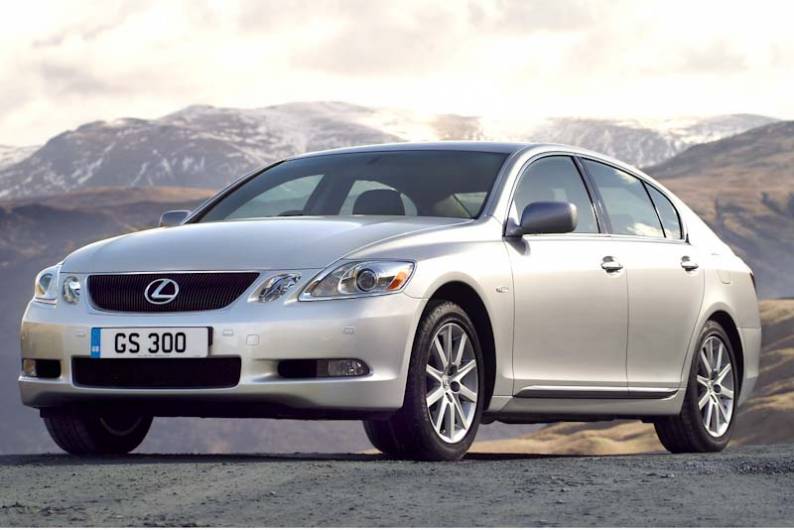
RAC sale – up to 33% off*
• Roadside cover from £5.29 a month†
• We get to most breakdowns in 60 mins or less
• Our patrols fix 4/5 breakdowns on the spot

By Jonathan Crouch
Introduction
By the time the third generation Lexus GS300 arrived in 2005, the public were well and truly clued in to what this car could do. The Lexus brand stands for peerless reliability, amazing refinement and smart use of technology. In many ways, the GS300 established a benchmark which, for the money at least, its German rivals were quite unable to meet. When it comes to badge equity, however, Lexus is still a couple of notches below the top European marques and this is reflected when it comes to valuing a used GS. If you want a genuinely class competitive executive car with a couple of thousand off what you might expect to pay, this third generation Lexus GS300 could be just the ticket.
Models
Third generation GS300 - Four door saloon, 3.0-litre petrol [base, SE, SE-L]
History
The old Lexus GS was first launched in 1993 and although it was extensively revised in 1998, the underpinnings of the car being sold in Lexus dealerships in early 2005 were at least twelve years old. It was in the handling and ride department that the GS was really showing its age, its rivals having left it behind. Given that ride refinement is a Lexus trademark, this left the GS rather high and dry. The third generation car thoroughly updated the GS line. Better to drive, better to look at and absolutely packed with technology, the GS300 was, once again, a car that could mix it with the class best. The SE model has been the biggest seller, sandwiched between an entry level car and the SE-L range-topper but the GS300 range was rather under promoted, Lexus appearing to devote much of their initial marketing resources to the GS450h hybrid model.
What You Get
Visually, the GS300 looks larger than its executive rivals and this illusion continues when you climb inside, where the huge rear bench promises room for three of the largest corporate types. The boot's large too, with over 500 litres of space on offer.
Behind the wheel (which electrically rises up and down to aid entry and exit), there's plenty of high-tech wizardry; take the backlit Optitron instruments, which appear almost magically from three black holes in the dashboard. There's also the option of a superb satellite navigation system. With this in operation, you are politely but firmly ordered around your intended route by a very sexy-sounding English girl. It's tempting to go the wrong way just to listen to her.
This apart, almost everything else is standard. As standard equipment, you got a Mark Levinson premium audio system, featuring a custom-designed amplifier and eight specially designed speakers, including a centre dash-mounted speaker for more detailed surround sound.
The GS300 specification includes Smart Key entry and push-button start-up system, a 10-speaker sound system with in-dash six-disc CD player, speed-sensitive electric power steering, cruise control, sequenced interior lighting with LED technology, a leather-trimmed multi-function steering wheel, advanced automatic dual-zone air conditioning, eight-way electrically adjustable front seats, tyre pressure warning system, Adaptive Front-lighting System, 17-inch alloy wheels, Bluetooth connectivity and an eight-inch touch-screen display. The SE version adds a DVD satnav system and leather, while the SE-L variant also includes a power sunroof, 18-inch wheels and a mega 14-speaker hi-fi.
What You Pay
Please fill in the form here for an exact up-to-date information.
What to Look For
As with the LS series, there is, amazingly, almost nothing to report. Toyota were determined to make these cars as faultless and long-lasting as possible and it seems they've succeeded. The main worry with a Lexus will be accident damage or mileage clocking. The panel gaps on both LS and GS series cars astound even now in terms of consistency and flushness of fit, so a second-rate repair will be obvious.
If you can, check the car's service records and cross-reference mileage with the dealers who carried out the scheduled maintenance. That way, you'll have peace of mind that the immaculate, low-mileage car you're looking at, really is just that.
Replacement Parts
(Based on a 2005 GS300) A new exhaust, excluding the catalytic converter will be just over £800. Brake pads are roughly £70 each and a headlamp is around £195.
On the Road
Certainly the GS300 is as fast, as smooth, as refined although not as entertaining to drive as the best of its rivals. A glorious 242bhp 3.0-litre straight six-cylinder engine with variable valve timing gives near 150mph performance. If that's not enough, Lexus also provide the option of a 4.3-litre V8 in the GS430 variant or the petrol/electric hybrid GS450h. The six-speed automatic gearbox used by Lexus in these models is one of the world's finest. Handling is predictable and aided in extremis by a new Vehicle Dynamics Integrated Management (VDIM) system, which enhances performance, traction control and vehicle stability. A further contribution to safety is made by the radar-controlled Pre-Crash Safety system (PCS), which automatically ensures optimum emergency braking performance and pre-tensioning of the front seatbelts.
Overall
The Lexus GS300 has a lot going for it and would probably rate as the finest car in its class if a) you're not particularly interested in a sporty or involving drive and b) you plan to keep it for a while and rack up some serious mileages. The build quality bar has been raised to another level and everything about the car's cabin is beautifully thought out, albeit in a rather soulless fashion. It's not a car you'll love but it is vehicle you'll grow to admire hugely. Just remember to factor in depreciation when you make your decision.







